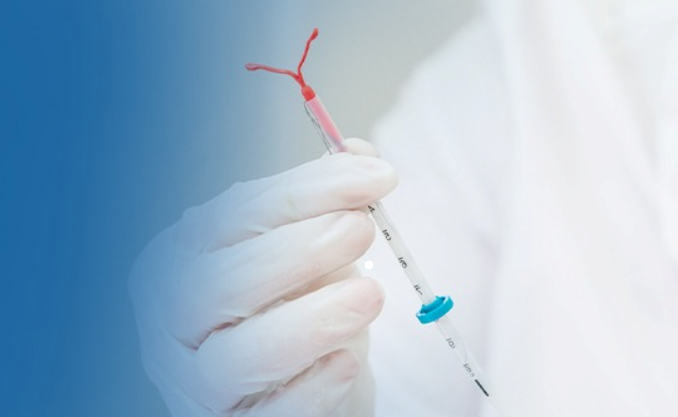Mirena is a long-acting hormonal intrauterine device (IUD) that serves as a highly effective form of birth control. It is a small, flexible, T-shaped device that is inserted into the uterus by a healthcare professional. Once in place, Mirena continuously releases a low dose of the hormone progestin (levonorgestrel) over a period of up to five to eight years, depending on the specific recommendation from the manufacturer and healthcare provider.
How Mirena Works
The progestin in Mirena works through multiple mechanisms to prevent pregnancy. It thickens the cervical mucus, creating a barrier that makes it difficult for sperm to enter the uterus and fertilize an egg. Additionally, it thins the uterine lining (endometrium), which reduces the likelihood of implantation even if fertilization occurs. In some cases, Mirena may also suppress ovulation, further decreasing the chances of pregnancy.
Mirena is considered one of the most effective forms of contraception available. With a failure rate of less than 1%, it provides reliable pregnancy prevention comparable to permanent sterilization methods. Unlike daily oral contraceptives, which require consistent use at the same time each day, Mirena is a "set-and-forget" method that allows users to go about their lives without the need for frequent reminders.
Benefits of Mirena
1. Long-Term Contraceptive Solution
One of the biggest advantages of Mirena is its longevity. Unlike birth control pills, patches, or injections that require regular maintenance, Mirena offers a worry-free contraceptive solution that lasts for several years. This makes it an excellent choice for individuals who want a long-term yet reversible form of birth control.
2. Minimal Maintenance
Once inserted, Mirena does not require daily attention. Users do not need to remember to take a pill, replace a patch, or schedule monthly injections. This convenience makes it a preferred option for those with busy lifestyles or those who struggle with adherence to other forms of contraception.
3. Reversible with Quick Fertility Return
Despite its long duration of effectiveness, Mirena can be removed at any time if pregnancy is desired. Fertility typically returns quickly, often within a few weeks or months after removal, making it a suitable option for those who may want to conceive in the future.
4. Reduces Menstrual Bleeding and Cramps
In addition to birth control, Mirena is commonly prescribed for women who experience heavy menstrual bleeding. Many users find that their periods become significantly lighter, and some may even stop having periods altogether. This can be particularly beneficial for individuals with conditions like menorrhagia (excessive menstrual bleeding) or anemia caused by heavy periods.
5. Non-Estrogen Option
Unlike many hormonal birth control methods that contain estrogen, Mirena relies solely on progestin. This makes it a viable choice for individuals who cannot use estrogen-based contraception due to medical conditions such as migraines with aura, high blood pressure, or a history of blood clots.
6. May Help with Endometriosis Symptoms
Mirena has been used off-label to help manage symptoms of endometriosis, a condition where tissue similar to the uterine lining grows outside the uterus. The progestin released by Mirena can help reduce pain and heavy bleeding associated with endometriosis, providing relief for some individuals.
Potential Side Effects and Risks
While Mirena is generally well-tolerated, some users may experience side effects. Most side effects are mild and improve over time, but it is important to be aware of potential reactions.
Common Side Effects:
- Irregular bleeding or light spotting, mainly in the first few months
- Headaches
- Breast tenderness
- Mood changes
- Ovarian cysts (which typically resolve on their own)
Less Common but Serious Risks:
- Device Expulsion: In some cases, Mirena may be partially or fully expelled from the uterus, which reduces its effectiveness.
- Uterine Perforation: Though rare, there is a small risk of the device puncturing the uterine wall during insertion.
- Pelvic Inflammatory Disease (PID): The risk of infection is highest within the first few weeks after insertion but remains low overall.
- Hormonal Side Effects: Some individuals report changes in libido, mood swings, or weight fluctuations due to hormonal effects.
What to Expect During and After Insertion
Mirena must be inserted by a healthcare provider during a short in-office procedure. The best time for insertion is typically during the first week of the menstrual cycle when the cervix is naturally softer. The procedure involves the following steps:
- A speculum is used to open the vagina, similar to a Pap smear.
- The IUD is inserted through the cervix and into the uterus using a small applicator.
- The provider trims the removal strings to an appropriate length.
The entire process usually takes only a few minutes, though some discomfort or cramping may be experienced during and after insertion. Medications such as ibuprofen can help reduce discomfort.
Post-Insertion Care
After insertion, some users experience light spotting or cramping for a few days to weeks. It is recommended to avoid inserting anything into the vagina, such as tampons or menstrual cups, for at least 24 hours after insertion to reduce the risk of infection.
A follow-up visit with the healthcare provider may be scheduled within six weeks to ensure the IUD is in place. After that, periodic self-checks of the removal strings can confirm that Mirena remains properly positioned.
Who Should Consider Mirena?
Mirena is an excellent option for many individuals, including those who:
- Want long-term but reversible contraception
- Experience heavy menstrual bleeding or painful periods
- Cannot use estrogen-based birth control
- Prefer a low-maintenance birth control option
- Have endometriosis and are looking for symptom relief
However, it may not be suitable for individuals with:
- A history of uterine abnormalities or fibroids that could interfere with placement
- Active pelvic infections or untreated sexually transmitted infections (STIs)
- Unexplained vaginal bleeding
- Known allergy to levonorgestrel or any components of the IUD
Mirena vs. Other IUDs
There are multiple types of IUDs available, and understanding the differences can help in making an informed choice. Mirena is one of several hormonal IUDs, but other options include:
- Kyleena: Releases a lower dose of progestin and is slightly smaller in size, making it suitable for individuals who have never given birth.
- Skyla: Effective for three years, also a lower-dose hormonal IUD.
- Liletta: Similar to Mirena in dosage and effectiveness but often available at a lower cost.
- ParaGard (Copper IUD): A non-hormonal option that prevents pregnancy using copper to create an inflammatory reaction toxic to sperm.
Finding a Trusted Provider for Mirena Insertion
If you are considering Mirena, it is essential to have the procedure performed by a skilled and experienced healthcare professional. Finding a trusted gynecologist ensures a safe and smooth experience from consultation to post-insertion care.
Mirena Insertion at Park Hospital, Gurgaon
Looking for the best gynecologist for Mirena insertion near you in Gurgaon? Choose Park Hospital for your Mirena insertion and experience expert care from our skilled team of gynecologists. We use advanced technology to provide a safe and comfortable procedure. From the initial consultation to post-insertion follow-ups, our specialists ensure comprehensive care that prioritizes your health and well-being.
Schedule a consultation today to discuss your options with our experts.
Mirena is a long-acting hormonal intrauterine device (IUD) that serves as a highly effective form of birth control. It is a small, flexible, T-shaped device that is inserted into the uterus by a healthcare professional. Once in place, Mirena continuously releases a low dose of the hormone progestin (levonorgestrel) over a period of up to five to eight years, depending on the specific recommendation from the manufacturer and healthcare provider.How Mirena Works The progestin in Mirena works through multiple mechanisms to prevent pregnancy. It thickens the cervical mucus, creating a barrier that makes it difficult for sperm to enter the uterus and fertilize an egg. Additionally, it thins the uterine lining (endometrium), which reduces the likelihood of implantation even if fertilization occurs. In some cases, Mirena may also suppress ovulation, further decreasing the chances of pregnancy. Mirena is considered one of the most effective forms of contraception available. With a failure rate of less than 1%, it provides reliable pregnancy prevention comparable to permanent sterilization methods. Unlike daily oral contraceptives, which require consistent use at the same time each day, Mirena is a "set-and-forget" method that allows users to go about their lives without the need for frequent reminders.Benefits of
Mirena is a long-acting hormonal intrauterine device (IUD) that serves as a highly effective form of birth control. It is a small, flexible, T-shaped device that is inserted into the uterus by a healthcare professional. Once in place, Mirena continuously releases a low dose of the hormone progestin (levonorgestrel) over a period of up to five to eight years, depending on the specific recommendation from the manufacturer and healthcare provider.How Mirena Works The progestin in Mirena works through multiple mechanisms to prevent pregnancy. It thickens the cervical mucus, creating a barrier that makes it difficult for sperm to enter the uterus and fertilize an egg. Additionally, it thins the uterine lining (endometrium), which reduces the likelihood of implantation even if fertilization occurs. In some cases, Mirena may also suppress ovulation, further decreasing the chances of pregnancy. Mirena is considered one of the most effective forms of contraception available. With a failure rate of less than 1%, it provides reliable pregnancy prevention comparable to permanent sterilization methods. Unlike daily oral contraceptives, which require consistent use at the same time each day, Mirena is a "set-and-forget" method that allows users to go about their lives without the need for frequent reminders.Benefits of Mirena 1. Long-Term Contraceptive Solution One of the biggest advantages of Mirena is its longevity. Unlike birth control pills, patches, or injections that require regular maintenance, Mirena offers a worry-free contraceptive solution that lasts for several years. This makes it an excellent choice for individuals who want a long-term yet reversible form of birth control. 2. Minimal Maintenance Once inserted, Mirena does not require daily attention. Users do not need to remember to take a pill, replace a patch, or schedule monthly injections. This convenience makes it a preferred option for those with busy lifestyles or those who struggle with adherence to other forms of contraception. 3. Reversible with Quick Fertility Return Despite its long duration of effectiveness, Mirena can be removed at any time if pregnancy is desired. Fertility typically returns quickly, often within a few weeks or months after removal, making it a suitable option for those who may want to conceive in the future. 4. Reduces Menstrual Bleeding and Cramps In addition to birth control, Mirena is commonly prescribed for women who experience heavy menstrual bleeding. Many users find that their periods become significantly lighter, and some may even stop having periods altogether. This can be particularly beneficial for individuals with conditions like menorrhagia (excessive menstrual bleeding) or anemia caused by heavy periods. 5. Non-Estrogen Option Unlike many hormonal birth control methods that contain estrogen, Mirena relies solely on progestin. This makes it a viable choice for individuals who cannot use estrogen-based contraception due to medical conditions such as migraines with aura, high blood pressure, or a history of blood clots. 6. May Help with Endometriosis Symptoms Mirena has been used off-label to help manage symptoms of endometriosis, a condition where tissue similar to the uterine lining grows outside the uterus. The progestin released by Mirena can help reduce pain and heavy bleeding associated with endometriosis, providing relief for some individuals.Potential Side Effects and Risks While Mirena is generally well-tolerated, some users may experience side effects. Most side effects are mild and improve over time, but it is important to be aware of potential reactions. Common Side Effects: Irregular bleeding or light spotting, mainly in the first few months Headaches Breast tenderness Mood changes Ovarian cysts (which typically resolve on their own) Less Common but Serious Risks: Device Expulsion: In some cases, Mirena may be partially or fully expelled from the uterus, which reduces its effectiveness. Uterine Perforation: Though rare, there is a small risk of the device puncturing the uterine wall during insertion. Pelvic Inflammatory Disease (PID): The risk of infection is highest within the first few weeks after insertion but remains low overall. Hormonal Side Effects: Some individuals report changes in libido, mood swings, or weight fluctuations due to hormonal effects. What to Expect During and After Insertion Mirena must be inserted by a healthcare provider during a short in-office procedure. The best time for insertion is typically during the first week of the menstrual cycle when the cervix is naturally softer. The procedure involves the following steps: A speculum is used to open the vagina, similar to a Pap smear. The IUD is inserted through the cervix and into the uterus using a small applicator. The provider trims the removal strings to an appropriate length. The entire process usually takes only a few minutes, though some discomfort or cramping may be experienced during and after insertion. Medications such as ibuprofen can help reduce discomfort.Post-Insertion Care After insertion, some users experience light spotting or cramping for a few days to weeks. It is recommended to avoid inserting anything into the vagina, such as tampons or menstrual cups, for at least 24 hours after insertion to reduce the risk of infection. A follow-up visit with the healthcare provider may be scheduled within six weeks to ensure the IUD is in place. After that, periodic self-checks of the removal strings can confirm that Mirena remains properly positioned.Who Should Consider Mirena? Mirena is an excellent option for many individuals, including those who: Want long-term but reversible contraception Experience heavy menstrual bleeding or painful periods Cannot use estrogen-based birth control Prefer a low-maintenance birth control option Have endometriosis and are looking for symptom relief However, it may not be suitable for individuals with: A history of uterine abnormalities or fibroids that could interfere with placement Active pelvic infections or untreated sexually transmitted infections (STIs) Unexplained vaginal bleeding Known allergy to levonorgestrel or any components of the IUD Mirena vs. Other IUDs There are multiple types of IUDs available, and understanding the differences can help in making an informed choice. Mirena is one of several hormonal IUDs, but other options include: Kyleena: Releases a lower dose of progestin and is slightly smaller in size, making it suitable for individuals who have never given birth. Skyla: Effective for three years, also a lower-dose hormonal IUD. Liletta: Similar to Mirena in dosage and effectiveness but often available at a lower cost. ParaGard (Copper IUD): A non-hormonal option that prevents pregnancy using copper to create an inflammatory reaction toxic to sperm. Finding a Trusted Provider for Mirena Insertion If you are considering Mirena, it is essential to have the procedure performed by a skilled and experienced healthcare professional. Finding a trusted gynecologist ensures a safe and smooth experience from consultation to post-insertion care. Mirena Insertion at Park Hospital, Gurgaon Looking for the best gynecologist for Mirena insertion near you in Gurgaon? Choose Park Hospital for your Mirena insertion and experience expert care from our skilled team of gynecologists. We use advanced technology to provide a safe and comfortable procedure. From the initial consultation to post-insertion follow-ups, our specialists ensure comprehensive care that prioritizes your health and well-being. Schedule a consultation today to discuss your options with our experts.
Read more
























